Abstract
A model aquatic ecosystem is devised for studying relatively volatile organic compounds and simulating direct discharge of chemical wastes into aquatic ecosystems. Six simple benzene derivatives (aniline, anisole, benzoic acid, chlorobenzene, nitrobenzene, and phthalic anhydride) and other important specialty chemicals: hexachlorobenzene, pentachlorophenol, 2,6-diethylaniline, and 3,5,6-trichloro-2-pyridinol were also chosen for study of environmental behavior and fate in the model aquatic ecosystem. Quantitative relationships of the intrinsic molecular properties of the environmental micropollutants with biological responses are established, e.g., water solubility, partition coefficient, pi constant, sigma constant, ecological magnification, biodegradability index, and comparative detoxication mechanisms, respectively. Water solubility, pi constant, and sigma constant are the most significant factors and control the biological responses of the food chain members. Water solubility and pi constant control the degree of bioaccumulation, and sigma constant limits the metabolism of the xenobiotics via microsomal detoxication enzymes. These highly significant correlations should be useful for predicting environmental fate of organic chemicals.
Full text
PDF
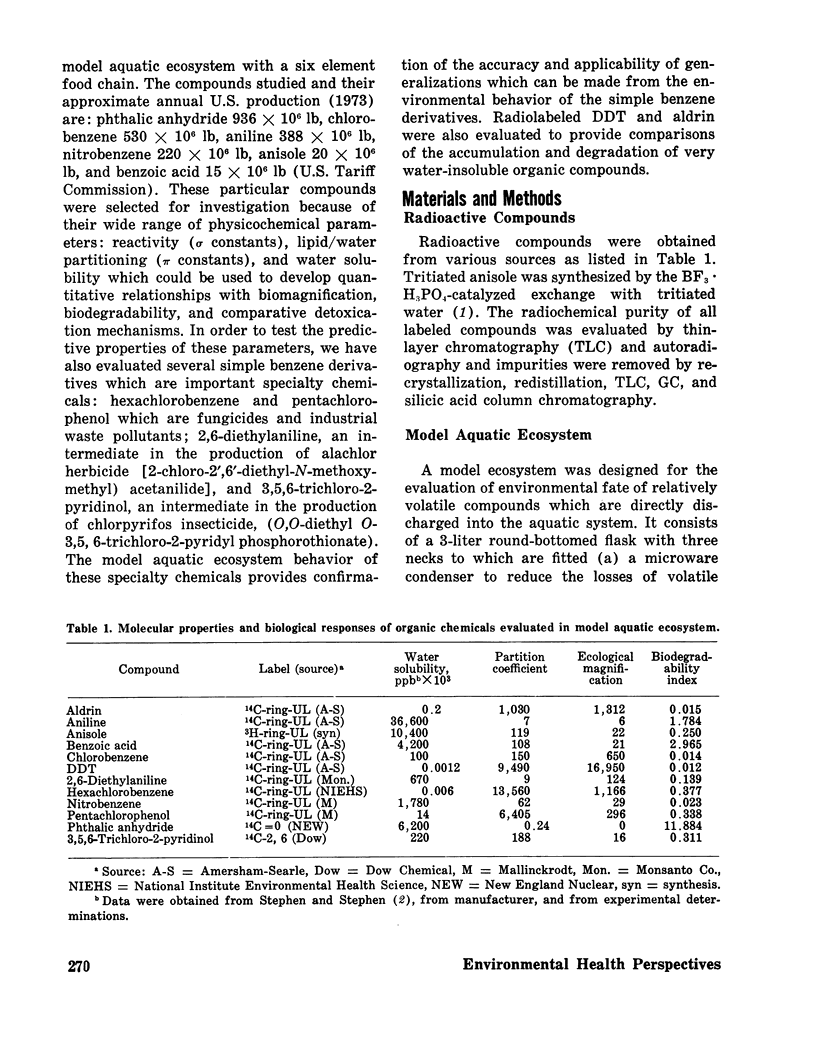
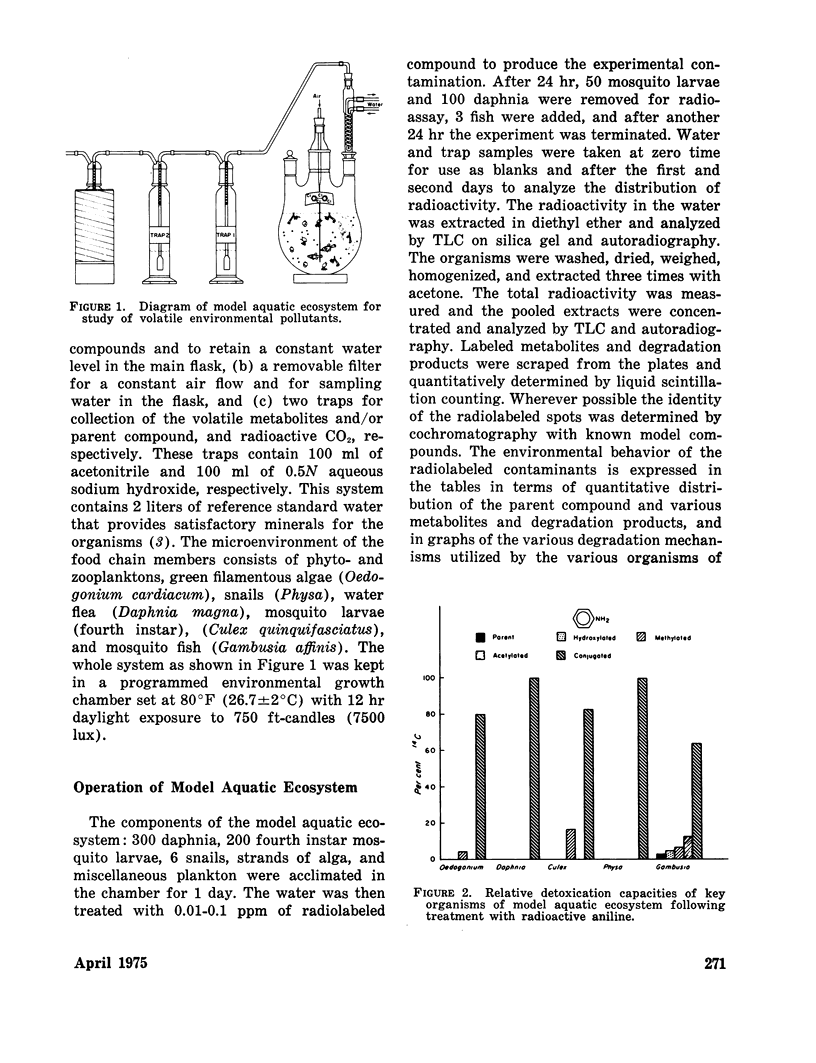
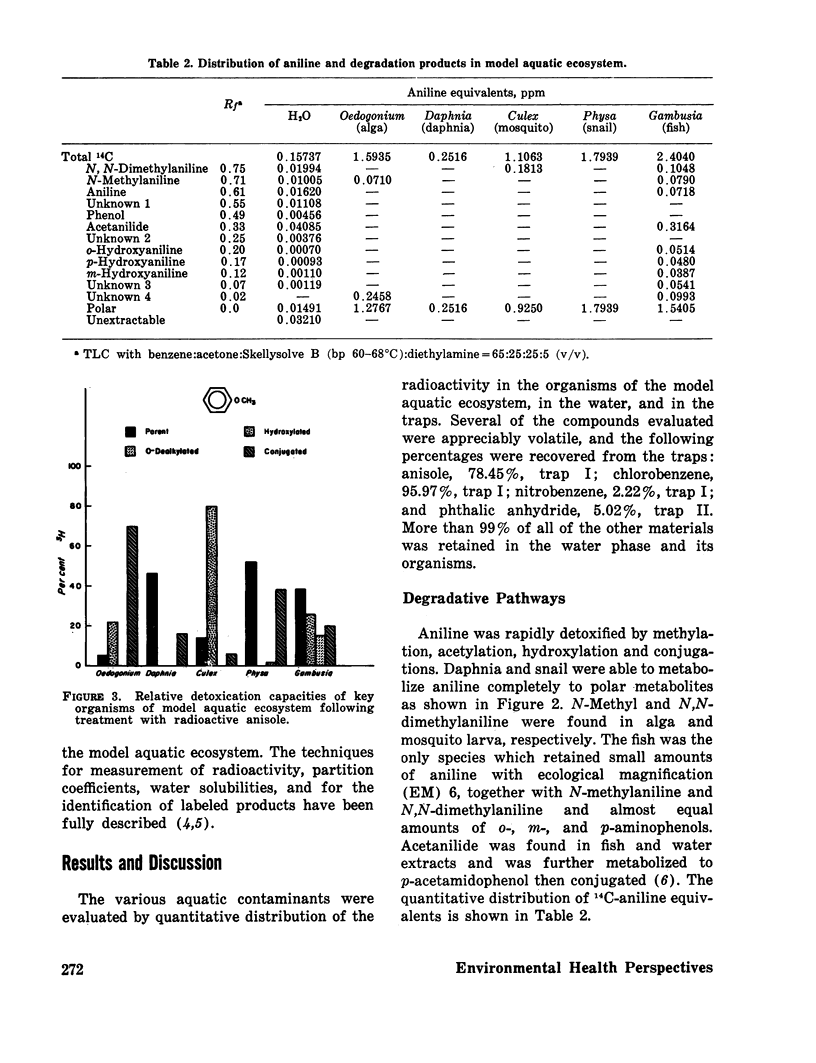
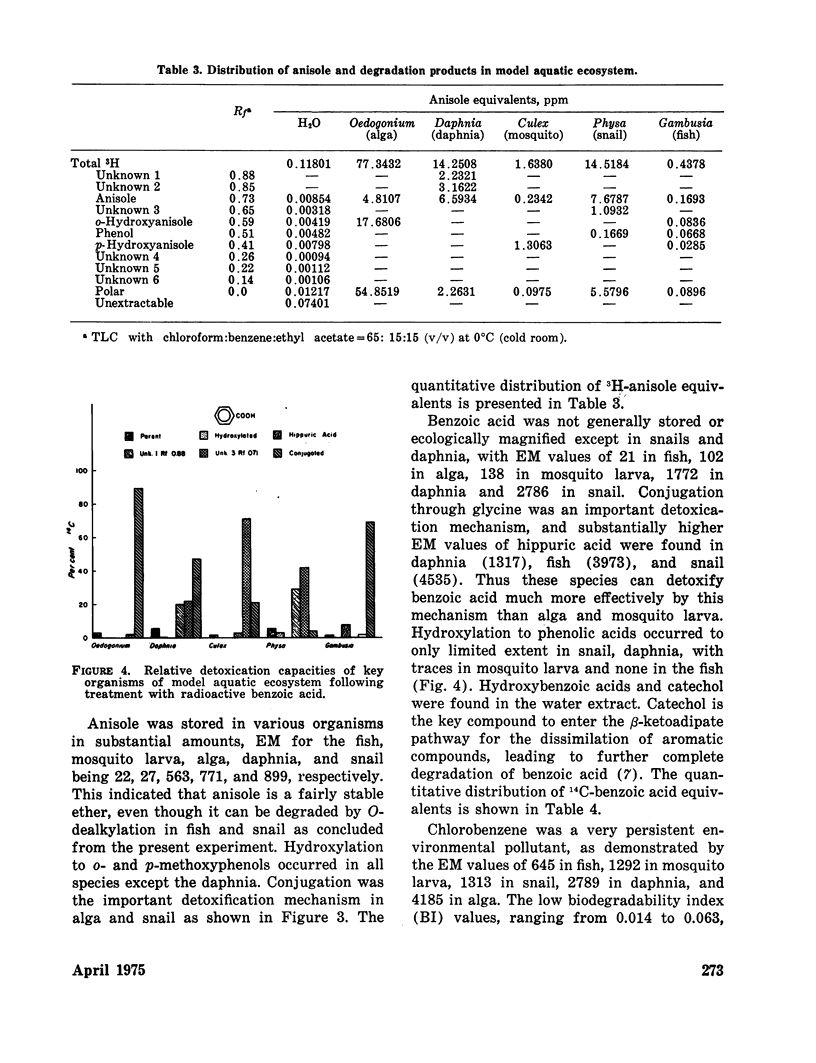
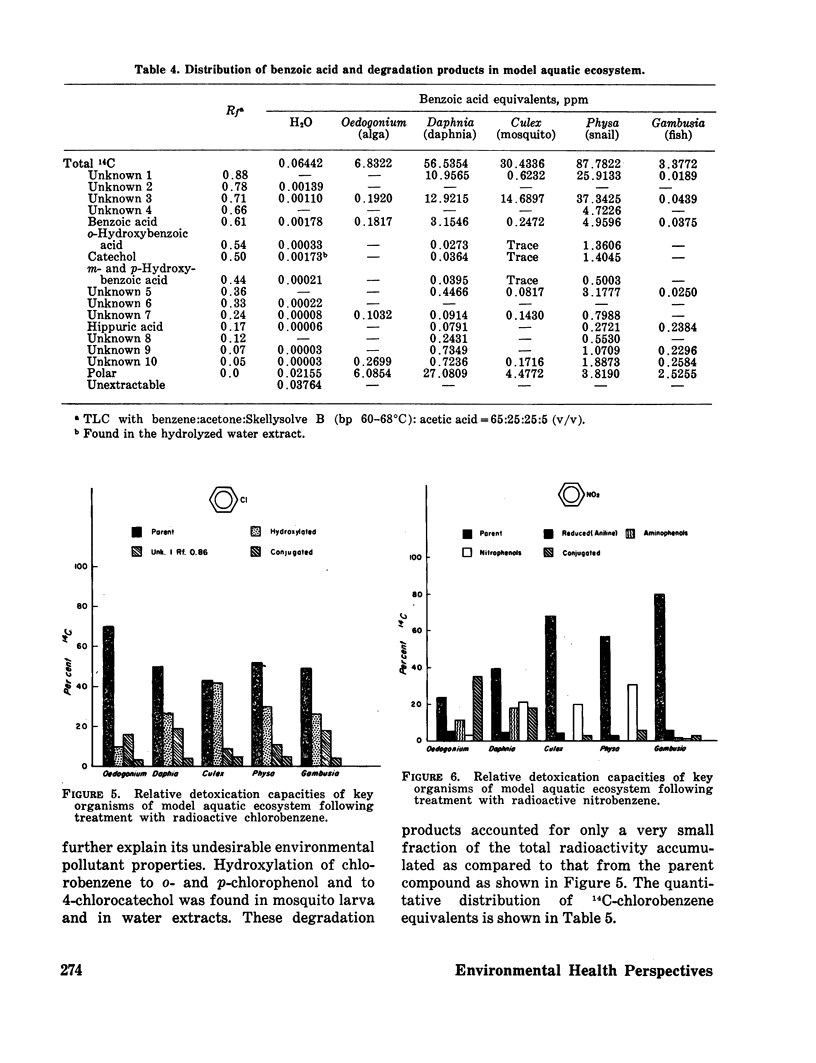
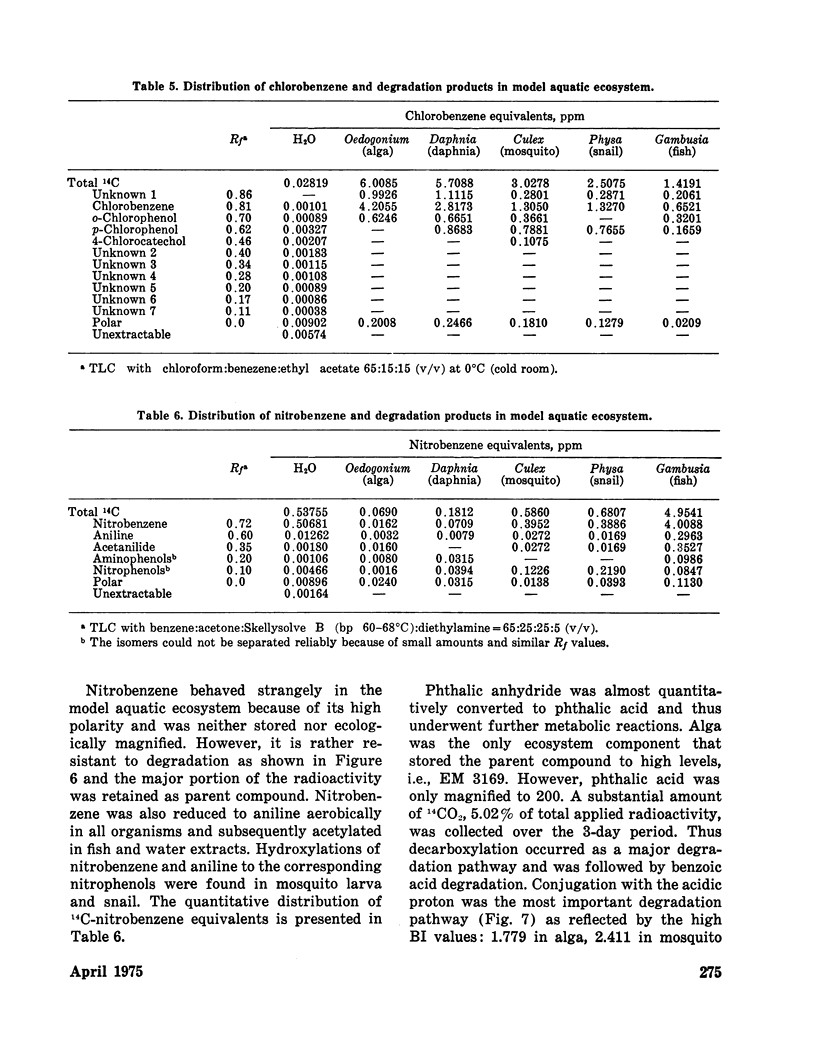
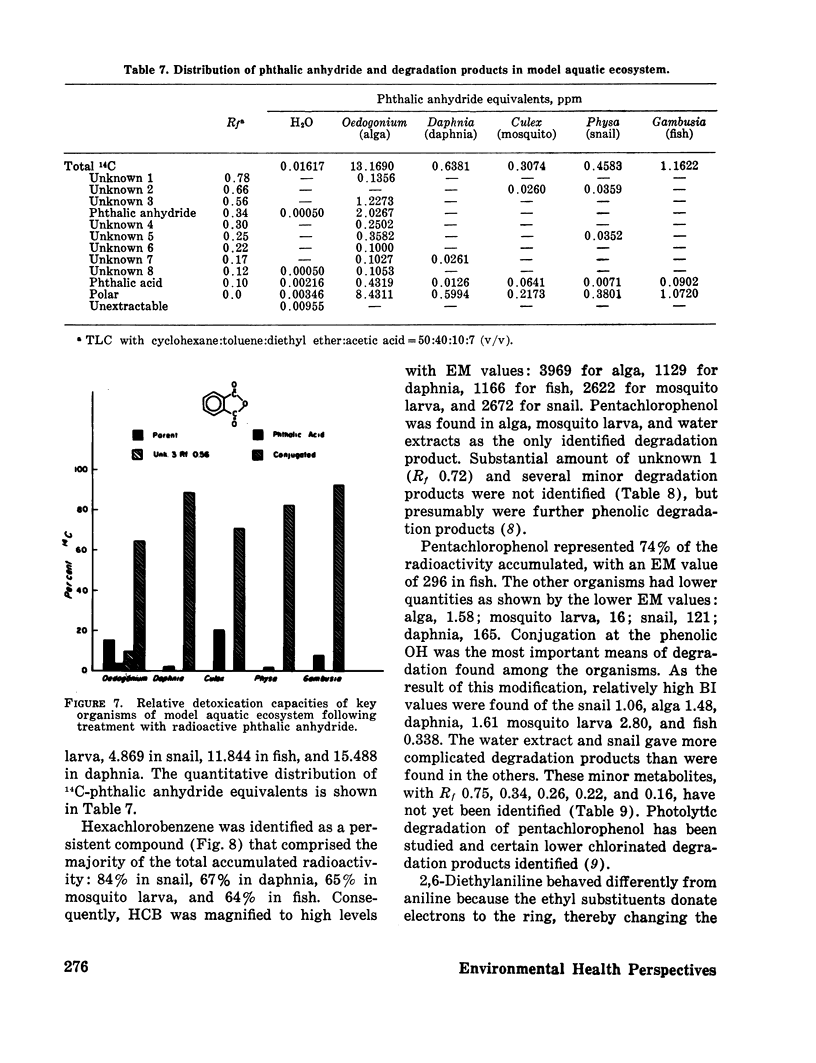
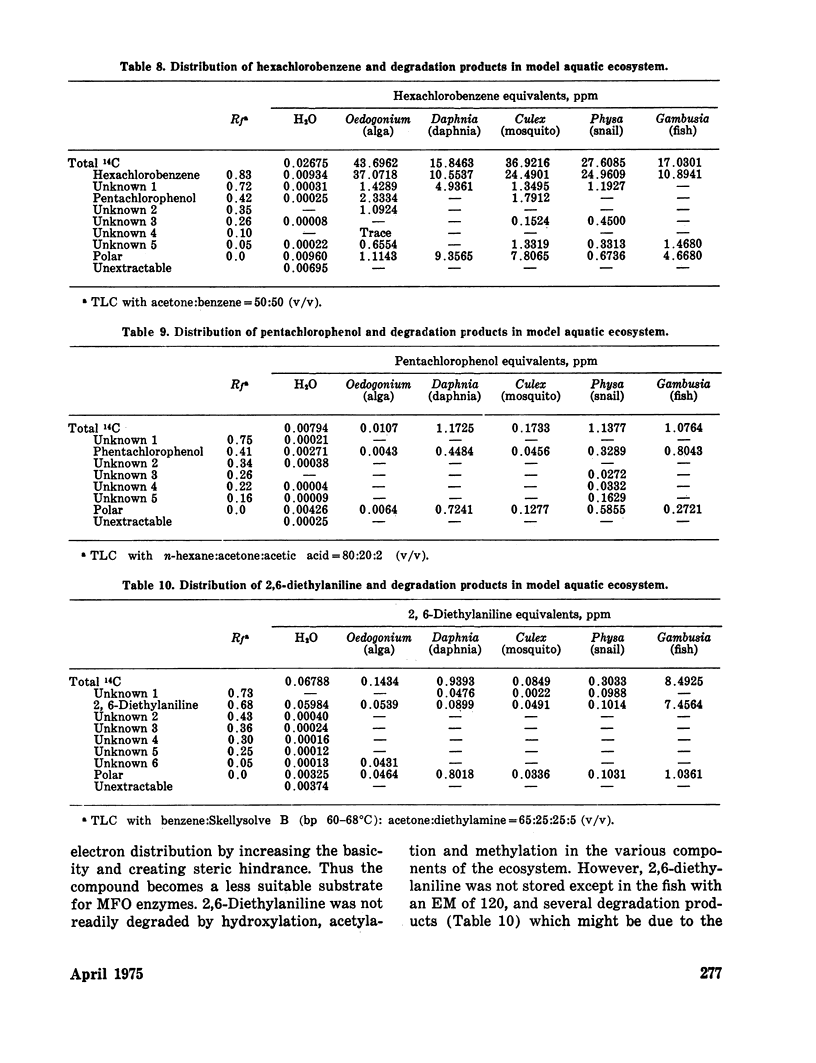
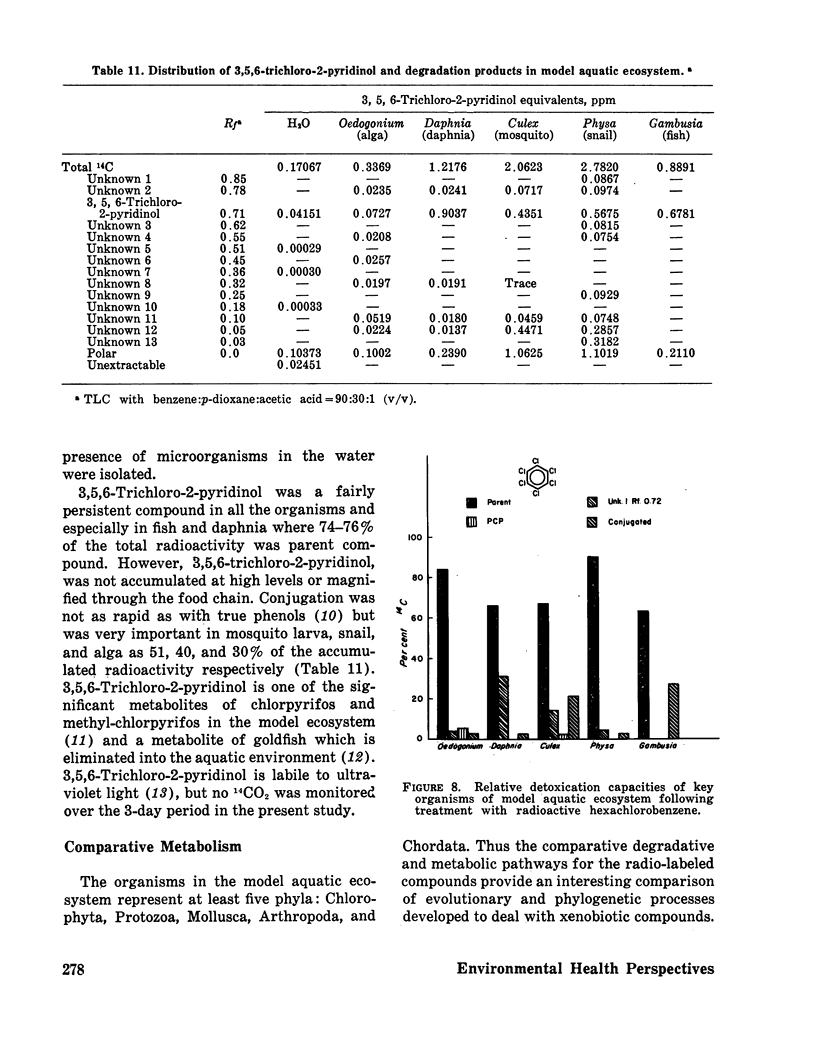
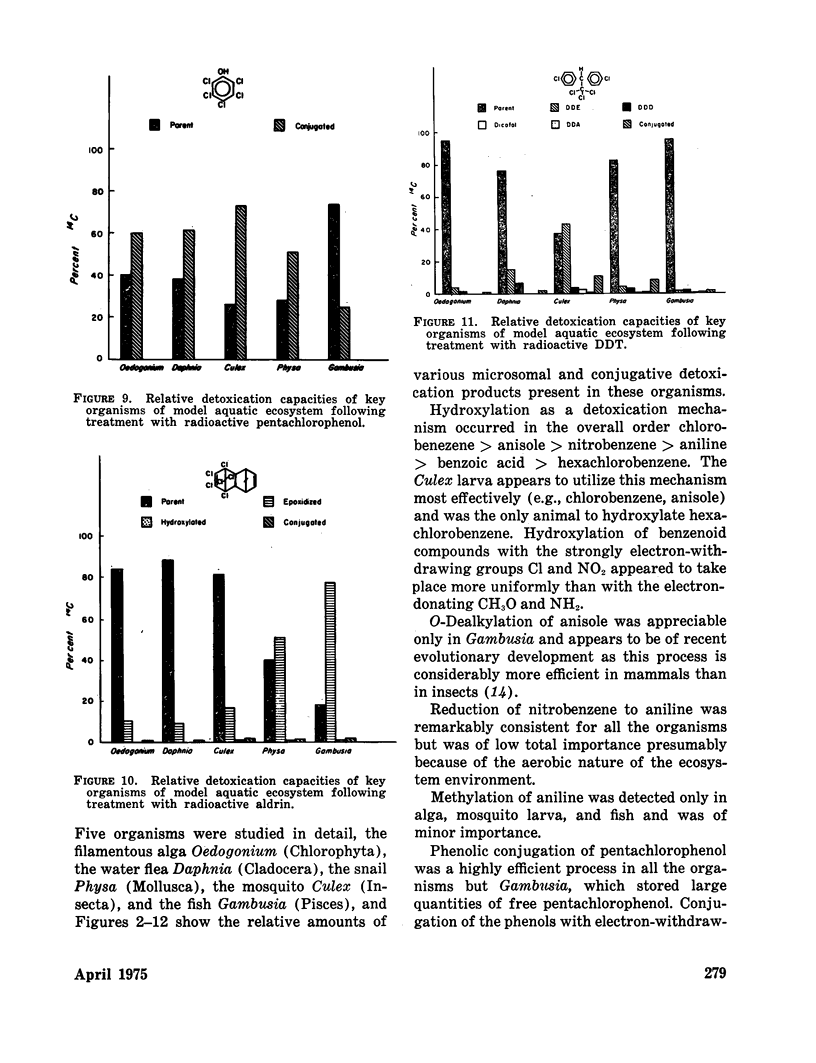
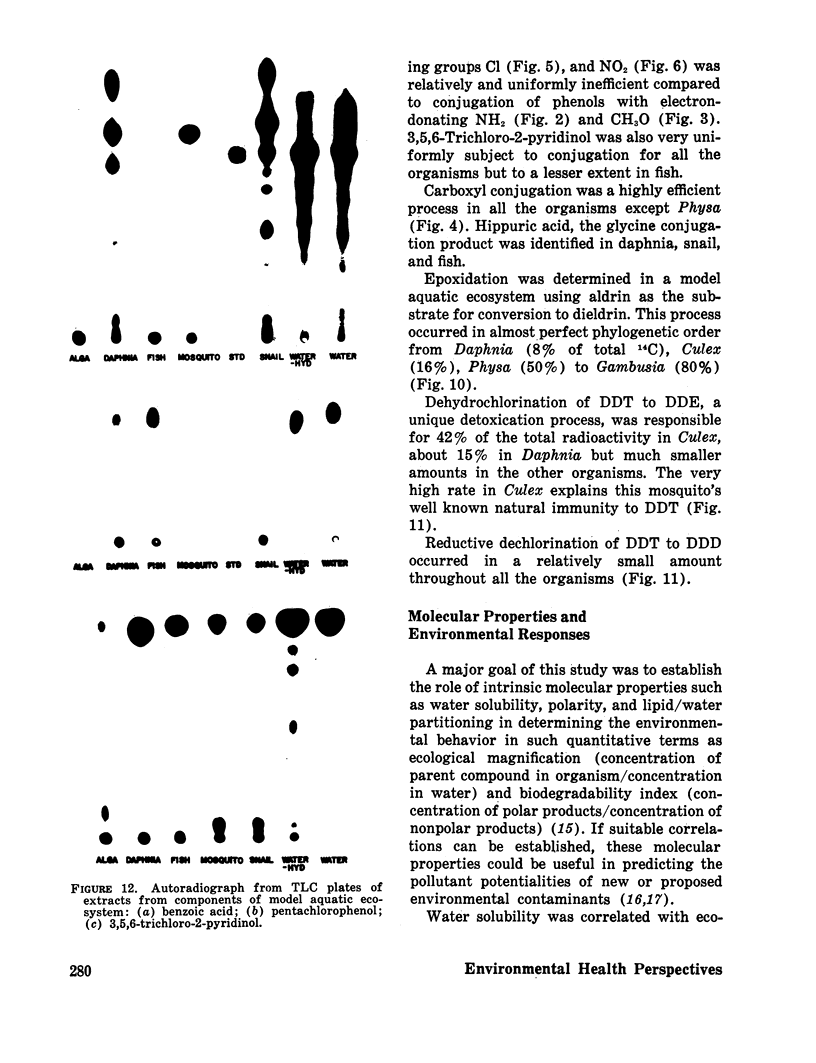
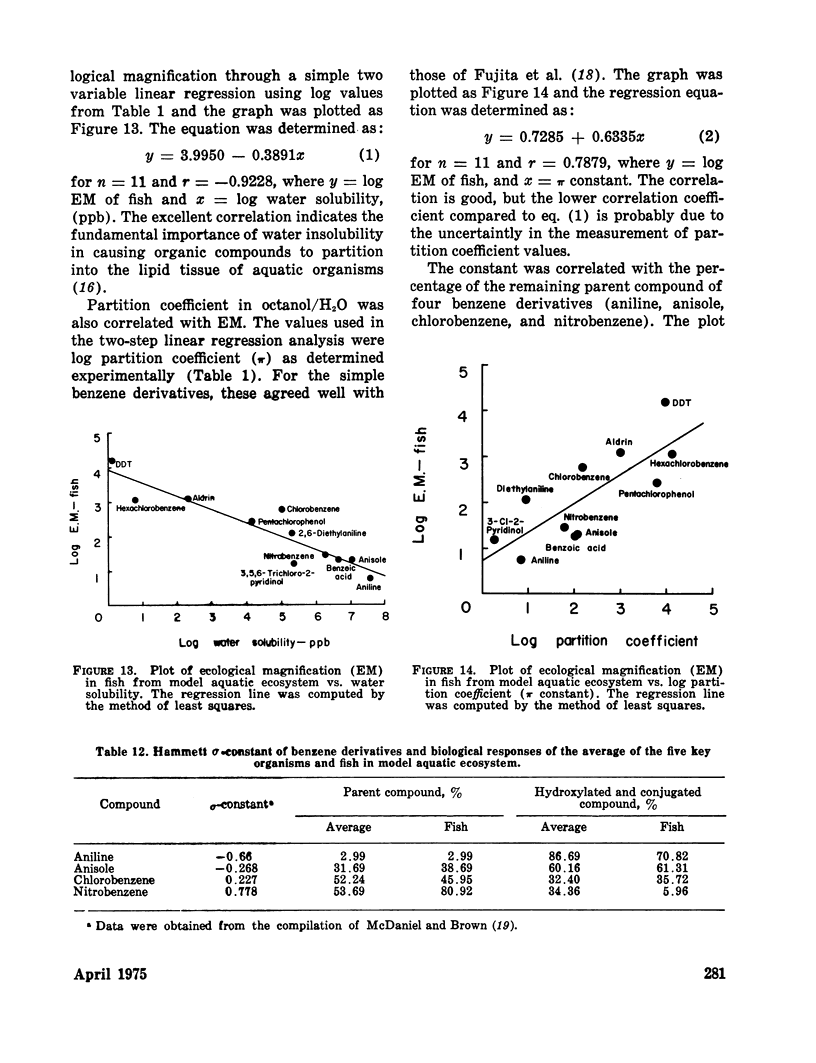
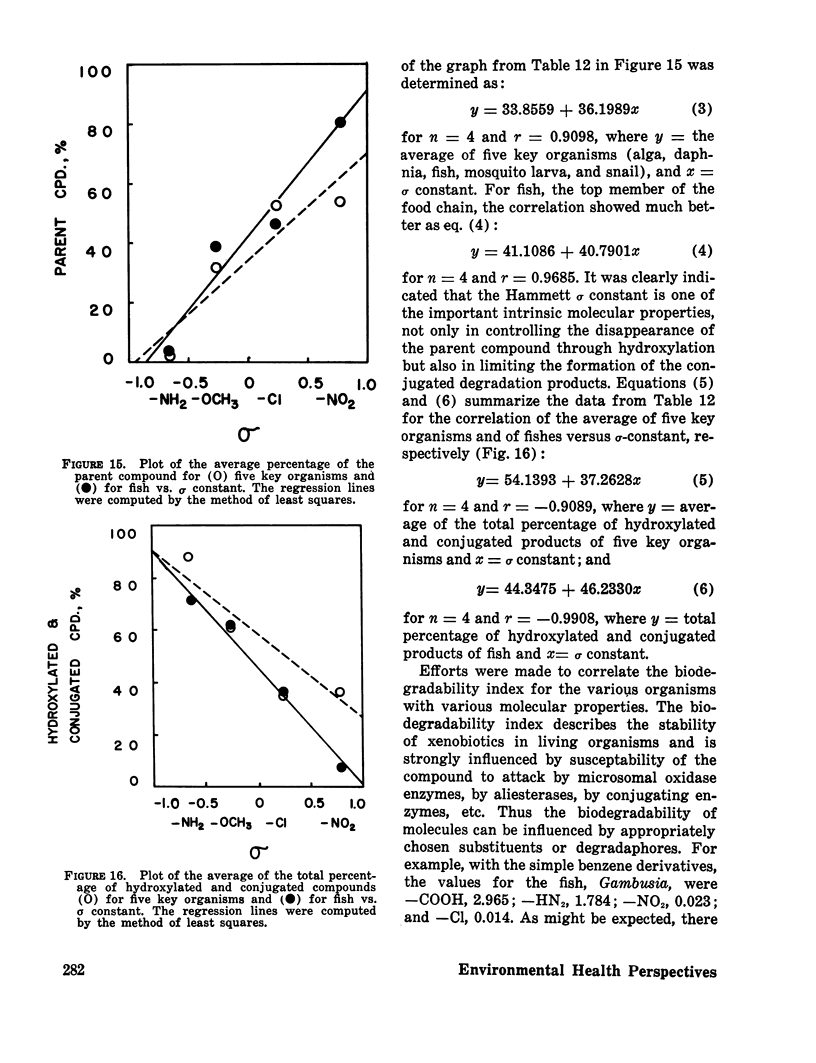
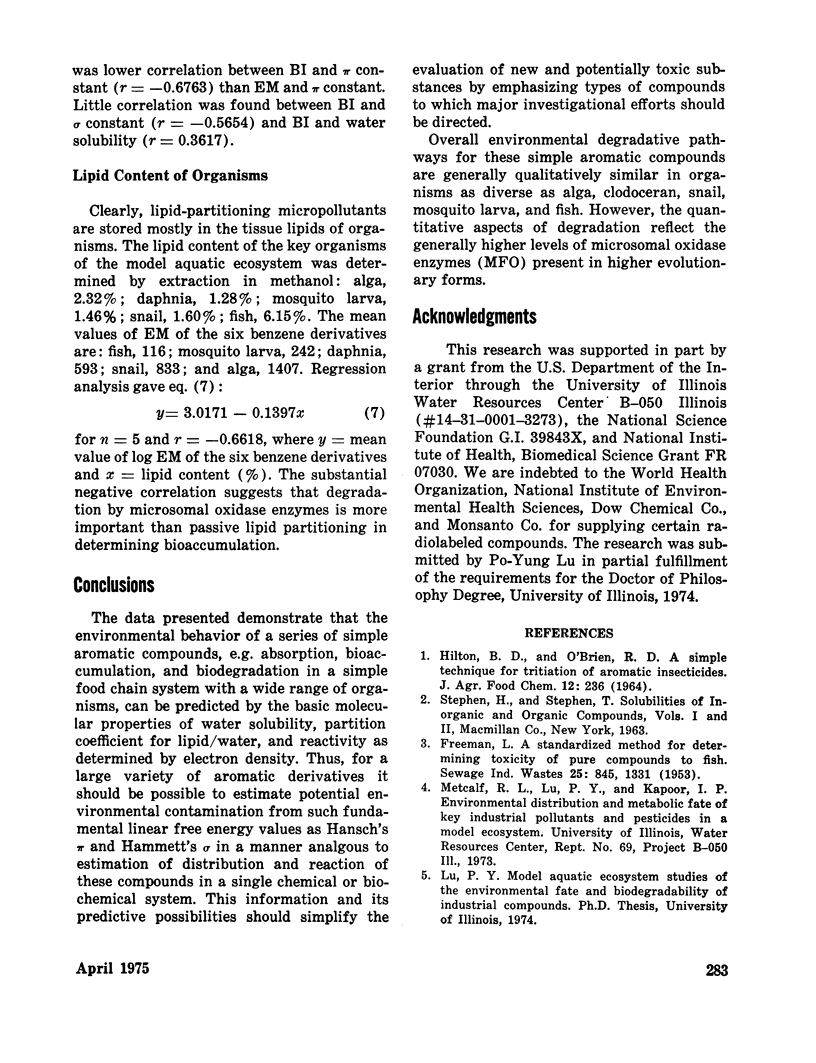
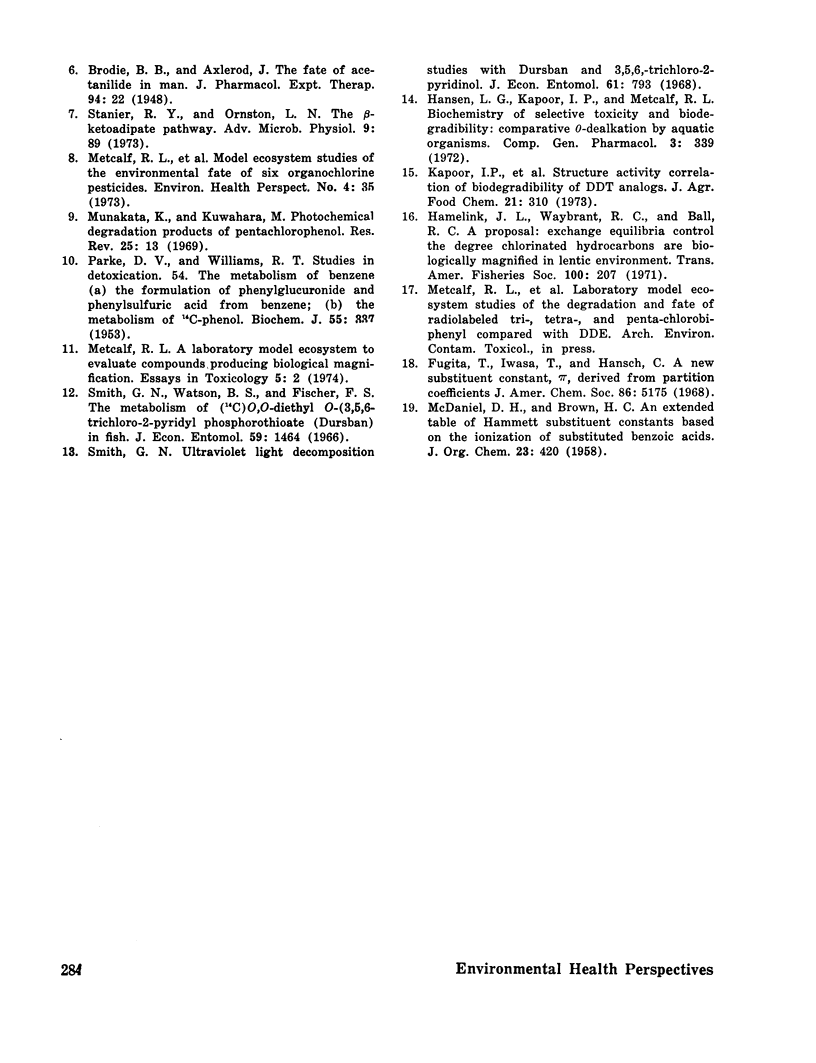
Selected References
These references are in PubMed. This may not be the complete list of references from this article.
- Hansen L. G., Kapoor I. P., Metcalf R. L. Biochemistry of selective toxicity and biodegradability: comparative O-dealkylation by aquatic organisms. Comp Gen Pharmacol. 1972 Sep;3(11):339–344. doi: 10.1016/0010-4035(72)90013-4. [DOI] [PubMed] [Google Scholar]
- Kapoor I. P., Metcalf R. L., Hirwe A. S., Coats J. R., Khalsa M. S. Structure activity correlations of biodegradability of DDT analogs. J Agric Food Chem. 1973 Mar-Apr;21(2):310–315. doi: 10.1021/jf60186a044. [DOI] [PubMed] [Google Scholar]
- Smith G. N., Watson B. S., Fischer F. S. The metabolism of [14C] 0,0-diethyl 0-(3,5,6-trichloro-2-pyridyl)phosphorothioate (Dursban) in fish. J Econ Entomol. 1966 Dec;59(6):1464–1475. doi: 10.1093/jee/59.6.1464. [DOI] [PubMed] [Google Scholar]
- Stanier R. Y., Ornston L. N. The beta-ketoadipate pathway. Adv Microb Physiol. 1973;9(0):89–151. [PubMed] [Google Scholar]


